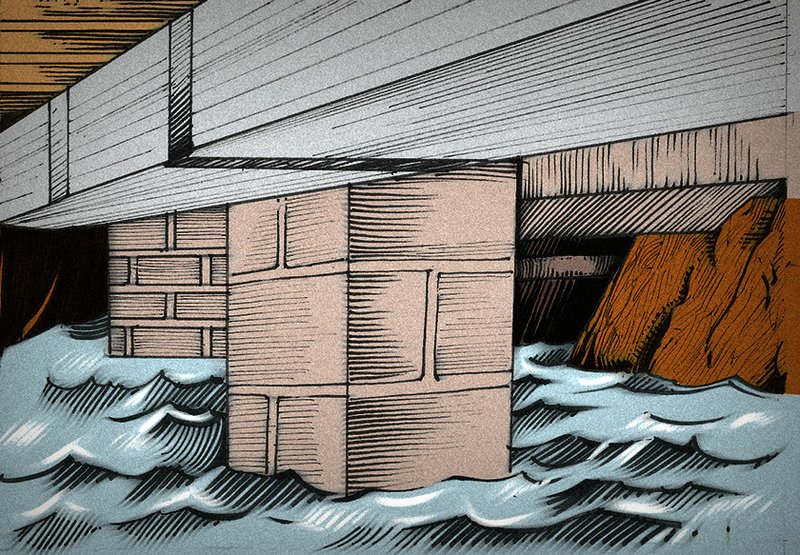Is it important for me to check the grading around the perimeter of my home and if so, why?
"Drainage around a house is either good or it is bad," explains Tim Hennelly, owner of Casa Buena home inspections in Little Rock. "It's like the Razorbacks' schedule; it's either home or away. While the fans always want a home game, homeowners want drainage to be away from the house. Unfortunately, what they want is not always what they have."
While drainage is always an important consideration in maintaining a property, it becomes even more important during the wet winter months, Hennelly says.
Whether a house is on a slab foundation or a pier and beam foundation (with a crawl space beneath it), improper drainage can cause structural damage. So maintaining proper drainage has the potential to save a homeowner thousands of dollars in foundation repairs.
Improper drainage around a house with a pier and beam foundation can allow water entry into the crawl space area, Hennelly says. If this condition is left uncorrected, fungal growth can develop on the wood framing, leading to damaged materials and an unhealthy environment.
"Everyone knows that water is going to flow downhill," he says. "Walk around the house and check to see if the flower bed areas and the yard along the foundation are sloping away from the house. If [they are], you have about 90 percent of the drainage issue addressed."
But, he adds, if low areas or negative slopes are present along the foundation, it is best to take steps to correct those conditions. The objective is to get a positive slope away from the house.
"It is commonly accepted that adequate drainage will occur if there is 1/2-inch of slope, per foot, for up to 6 feet from the foundation," Hennelly says. "In other words, when standing 6 feet away from the foundation, the mulch or grass should be three inches lower than its height at the foundation."
In some cases this can be accomplished by removing old mulch that has built up. Always remove the old mulch prior to installing new mulch.
"If not, your home will truly become your castle, as the raised mulch level will create a moat effect around the house," Hennelly says.
Sometimes, negative slopes can be corrected by spreading additional soil along a low area or laying pieces of sod where positive slopes are not present, he says, adding that when placed along the foundation, the thickness of the sod will provide enough height to angle the slope for positive drainage.
"In other instances, it can be expensive to achieve the positive slope but cost to do so will more than likely be less than potential repairs you could face as a result of water intrusion," Hennelly says.
"My own house had a flat grade along the foundation with no drainage slope away from the foundation and fortunately, none toward it," he says. "However, after prolonged rains or heavy downpours, my crawl space would collect varying amounts of water. Additionally, the house did not have gutters [the other 10 percent of the drainage solution]. Although gutters did have a positive effect in reducing the amount of water at the foundation, I knew I needed to get the soil sloping away from the house. Two dump truck loads of dirt, a rented front-end loader, a lot of raking dirt and moving shrubs, and a long day of work got the job done."
Some homeowners will not be able to get a positive slope simply because the terrain or steep grade limits what can be achieved, Hennelly concludes. In such a case, the only option is to install a subsurface drain.
"That's usually the costliest option," Hennelly says, "but it can be less expensive than the damaging effects of water."
-- Linda S. Haymes
Do you have a decorating or remodeling question? We'll get you an answer from an authority. Send your question to Linda S. Haymes, Arkansas Democrat-Gazette, P.O. Box 2221, Little Rock, Ark. 72203 or email:
lhaymes@arkansasonline.com
HomeStyle on 01/31/2015
